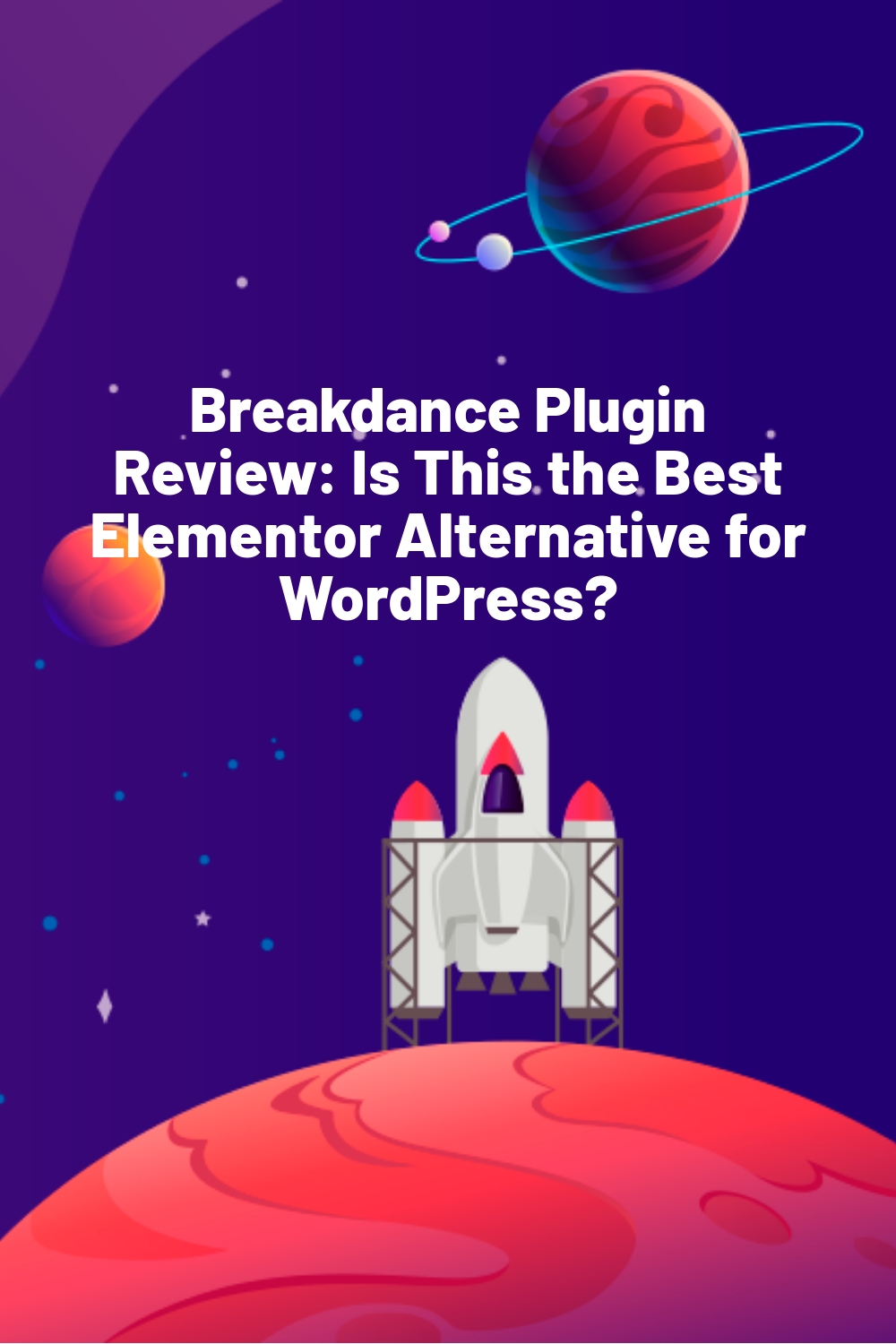The new Breakdance website builder promises to take WordPress website creation to a new level by offering a lightweight, performance-optimized approach to designing beautiful, dynamic pages without relying on a wealth of resource-intensive plugins.
Though it hasn’t been around for long yet, Breakdance is already earning rave reviews and establishing a reputation as one of the best Elementor alternatives on the market.
Is it really that good?
Is it worth ditching Elementor, Divi, or your favorite WordPress page builder, and switching to this fast, flexible, and feature-packed website creation plugin?
Those are the questions we asked ourselves when we put this one through its paces on our WPLift test site.
You’ll find our answers in the Breakdance review below.
What is the Breakdance Website Builder?
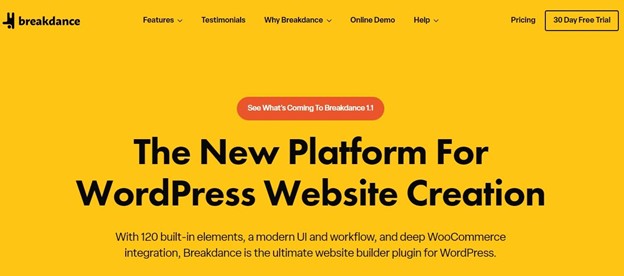
The rise of drag-and-drop page builder plugins has certainly revolutionized the way many of us use WordPress, giving us a beginner-friendly platform that we can use to create professional-level websites.
The problem is that many of these page builders are also accused of negatively impacting site performance thanks to their sheer size and the number of additional plugins and add-ons you need to use with them.
Breakdance is a powerful platform that looks to put an end to all that by combining practically every website feature you could possibly need into one lightweight tool which not only eliminates the need to bloat your site with countless other plugins but also gives you maximum control over your website.
Breakdance Key Features

1. WooCommerce Integration
One of the true jewels in Breakdance’s crown is its deep integration with WooCommerce, making it an excellent alternative to Elementor for online store owners.
Article Continues Below
The platform combines beautiful designs with more than 25 eCommerce elements that allow you to create bespoke product pages, upsells, and checkout journeys, improving the shopping experience for your customers and boosting conversions in the process.
2. Performance Optimization
Unlike other page builders, Breakdance doesn’t require you to load a theme or template while its extensive array of both backend and frontend features means you don’t need to install extra plugins for things such as contact forms or pricing tables.
That alone helps make Breakdance one of the fastest-performing site creators around, but the developers have taken things even further by integrating useful features such as in-built caching, image optimization, and lazy loading.
3. 120+ Website Elements
Whether you’re building a store, a blog, or a business website, we’re willing to bet money that you’ll find all of the elements you need within Breakdance.
All the usual website components such as headings, text, images, and buttons are correct, but the tool also includes a wide range of other elements that you can normally only access by installing extra plugins.
These include
- Social media sharing and embedding
- Google maps
- Image galleries
- Images with zoom feature (ideal for eCommerce)
- Menu builder
- Header and footer builders
- Contact forms
- Account registration and login tools
- Author boxes.
And more.
Breakdance Website Builder User Experience: How to Create Your First WordPress Site
1. Install Breakdance

To get your copy of Breakdance, point your browser to https://breakdance.com/get and click ‘Download Breakdance Trial.’
This will download the plugin to your hard drive as a .zip file.

You can then add this to your WordPress installation via the usual method of navigating to Plugins – Add New – Upload Plugin.
If you need more detailed instructions on how to do this, we’ve included a step-by-step tutorial in this complete beginner’s guide to WordPress plugins.
2. Complete the Setup Wizard
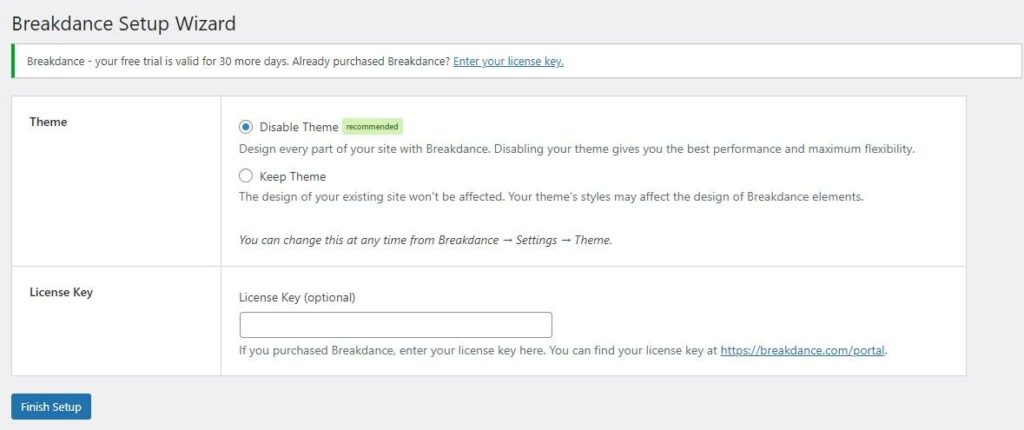
Once you’ve activated the plugin, you’ll be taken to a very simple setup wizard.
Here, your main task is to decide whether to disable your current theme and build everything with Breakdance or keep your theme as it is and use Breakdance as a standard page editor.
The theme’s developers recommend picking the first option, and so do we as it will allow you to really use the site builder to its full potential.
If you buy the plugin right away, you can also enter your license key here. If you decide to buy it after the trial ends, you can enter the license key by navigating to Breakdance – Settings – License from your dashboard menu.
3. Setup Your Templates

With all that done, you’re ready to start using Breakdance to build beautiful web pages, posts, and eCommerce features.
To begin with, navigate to Breakdance – Templates where you can add and configure templates for most content types.

The only thing that seems to be missing is a pre-defined template for stand-alone pages, though you can always create your own by clicking the ‘Add Custom Template’ button.
This allows you to give your new template a name, assign it a priority and choose which type of content it applies to.

While the basic options are all there (posts, pages, etc.), you can further narrow this down by using the Conditions feature to ensure that your template is only used for certain content such as pages and posts created by a particular author, published on a certain day, or for individual pages.
4. Edit Your First Page With Breakdance

To use and edit the templates you just set up, you can open up any content type and click the ‘Edit in Breakdance’ button.
If you’re used to installing a WordPress theme and using page builders like Elementor to customize it, the blank template that greets you on the next screen may throw you for a loop.
It certainly took us more than a few moments to figure out how to use Breakdance, but once we got the hang of it, it quickly became an easy process.

The best way to structure your pages with Breakdance is to use the sections element and, where necessary, divide them using columns.
Click the ‘Add’ button at the top of the blank page and this will present you with a whole host of options for creating your page section by section.

Select ‘section’ from the elements menu and a new menu will appear that lets you customize every element of that section, from choosing the layout to configuring the colors, size, and more.
You can even choose to add five different background types including:
- Solid color
- Gradient color
- Image
- Slideshow
- Video.
Adding a video background is as easy as uploading your site or pasting the URL of a video you’ve already uploaded elsewhere, such as on YouTube.
Once you have your section set up, you can choose to add a single element (say a heading or a contact form) or use the columns feature to include multiple elements in one section.
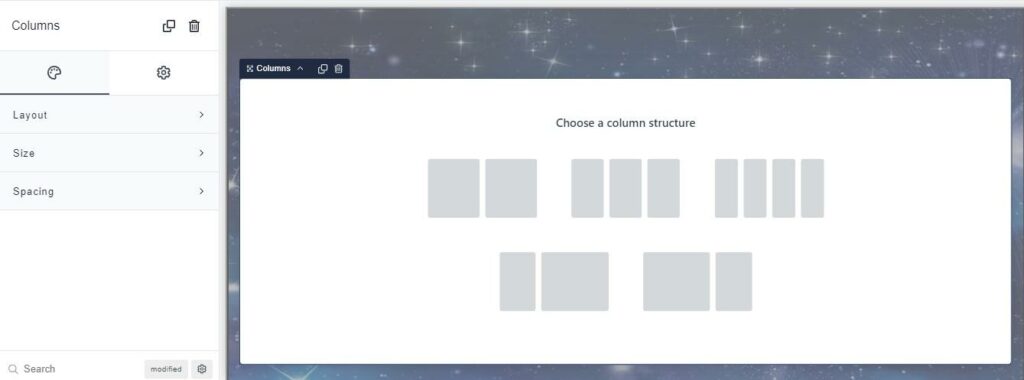
Those columns can then be filled in with a huge assortment of elements ranging from basic headings, text, and media to buttons, icons, pricing tables, FAQs, and more.
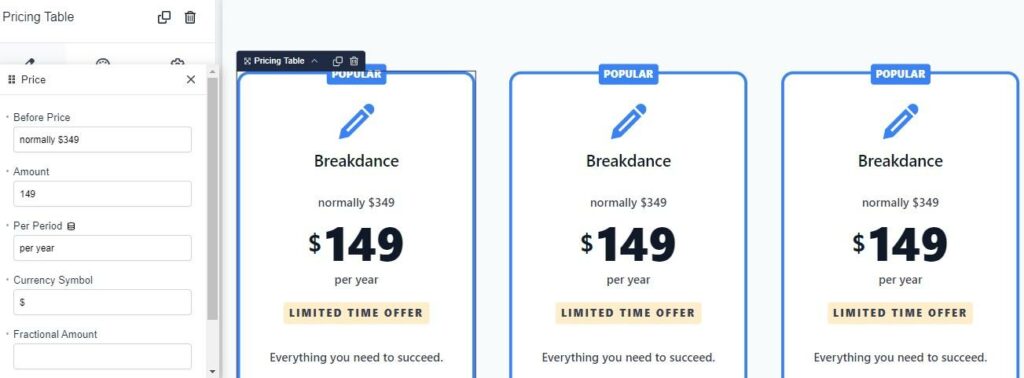
For example, we created a three-column template to which we added very attractive pre-designed pricing tables.
Again, every component of this table can be completely customized, although the downside to this is that there are so many options that finding what you need can seem like an overwhelming process.
We spent a good 10 minutes exploring the pricing table customization options and still couldn’t find a simple way to change the color of those table boxes.
If you’re a new WordPress user, you may find this a little disheartening, but it’s still worth sticking with it as the incredibly advanced levels of customization still mean you still enjoy greater control over the look, feel, and functionality of your website than many other page builders can offer.
5. Add Pre-Made Elements
If you find creating your own elements a little too taxing, you can always build your pages by combining multiple designs from the Library.
Here, you can add:

Unique pricing tables

Attractive Call to Action blocks

Stylish border settings

Niche-focused services and features sections

And more.
Use as many premade sections or custom-built elements as you like, hit save, and you’ll have successfully created a beautiful, dynamic page that offers your visitors the ultimate user experience.
How Much Does Breakdance for WordPress Cost?

There are two great things to like about Breakdance’s pricing.
First, you can enjoy unrestricted use of the plugin for 30 days without entering your payment details or even an email address. If you’re worried about handing over your credit card information or forgetting to cancel the trial and accidentally paying for something you ultimately don’t want, you’ll no doubt agree that this is such a good deal.
The second good deal is the pricing structure.
Whereas many services offer multiple tiers with certain features restricted on the lower-priced plans, Breakdance offers every single feature for a single yearly flat fee of just $149.
For this fee, you can:
- Use Breakdance on unlimited websites
- Access premium support
- Use all of the features, and design library elements.
A word of caution, however:
Breakdance’s developers have made no secret of the fact that they’re planning to bump up the price of the website builder to $349 per year, though they also assure us that users who sign-up at the lower price will only ever pay $149 for each yearly renewal.
Breakdance Website Builder Pros and Cons
Pros:
- Offers everything you need to create professional-quality websites without relying on an abundance of plugins or even a theme
- Comes with an unlimited site license making the current $149 price tag an even better deal
- Built with performance in mind, pages created with Breakdance typically load faster than those created with Elementor.
Cons:
- Breakdance’s documentation is somewhat lacking and unclear. It could certainly be improved to help new users navigate their way around the huge array of options
- There are so many features, elements, and customizable options that it can be overwhelming and make it difficult to find some important stuff.
Breakdance Website Builder: The Faster, Simpler Alternative to Elementor
Breakdance is such a unique website creation tool with such an individual way of doing things that it can be a difficult plugin to adjust to if you’ve been using Elementor for a long time.
Once you get to grips with it, however, you’ll likely be just as blown away as we were by both the quality of the designs and the incredible functionality that come in a great performance-optimized package.
Meanwhile, the 120+ premium website elements mean you’ve got everything you need to create just about any kind of website imaginable.
All in all then, we have to conclude that Breakdance certainly is one of -if not the- best Elementor alternatives around and would certainly recommend checking it out before the current introductory price is increased.
